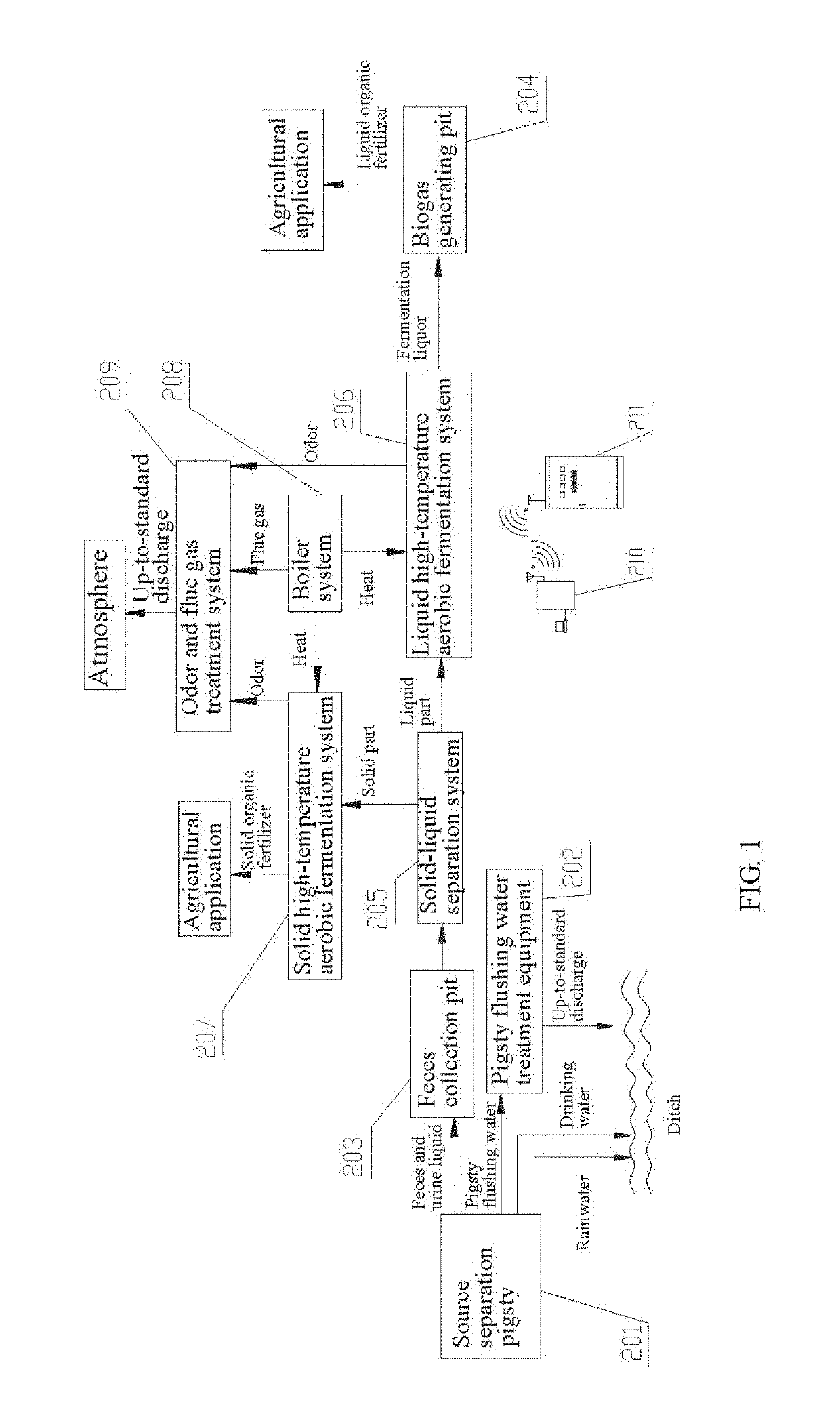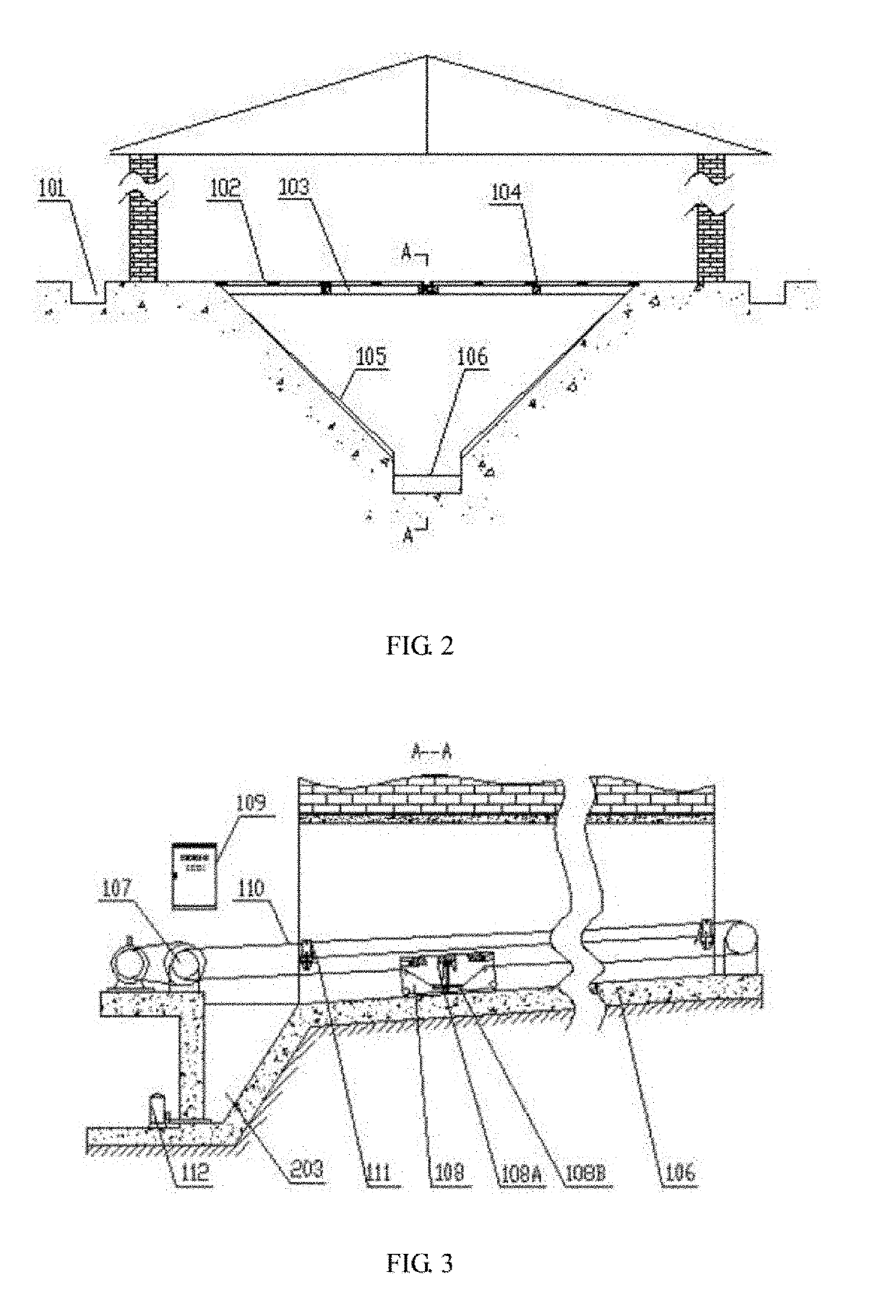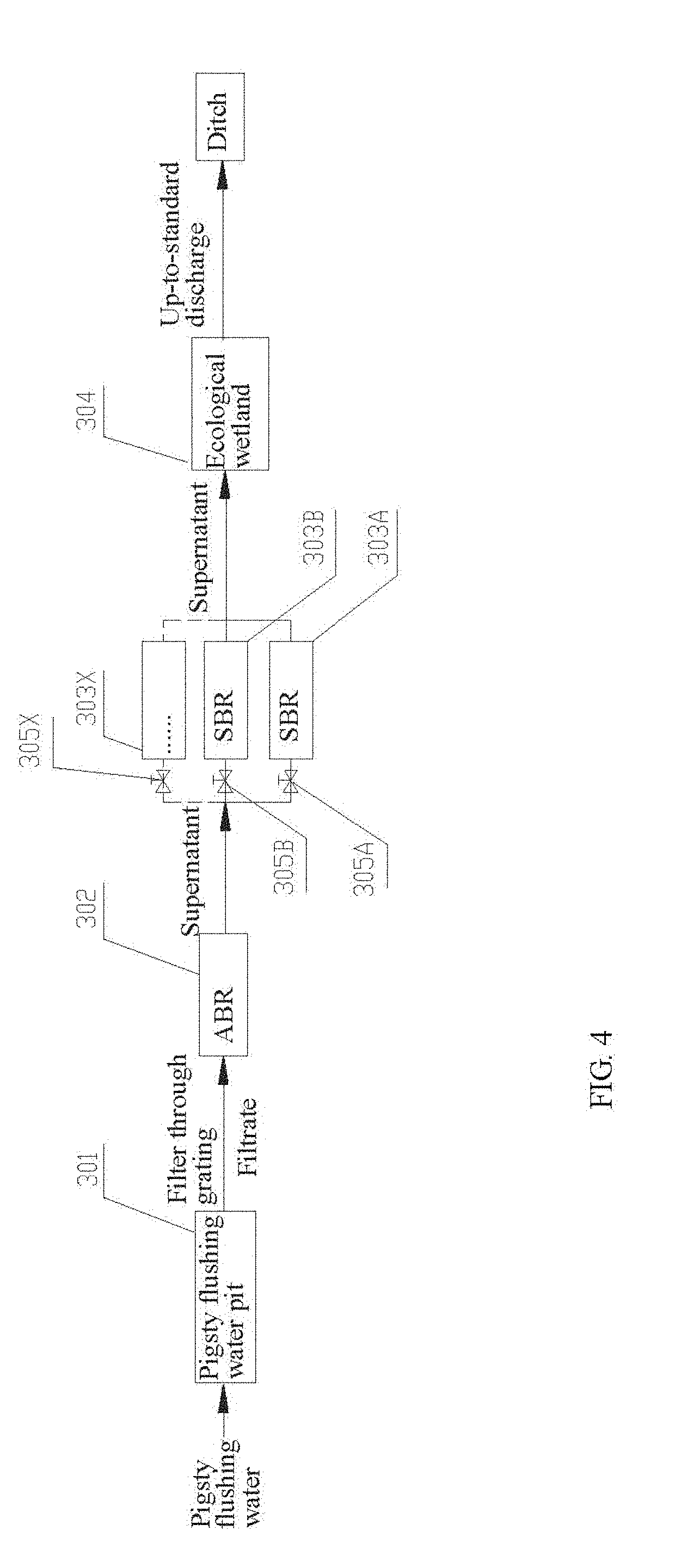The intensive and large-scale development of the livestock and poultry breeding provides abundant and high-quality livestock and poultry products for the market, and also, feces enormous
environmental pressure caused by a large number of livestock and poultry pollutants.
Firstly, livestock and poultry feces will bring serious
odor and pollute air.
Secondly, the livestock and poultry feces will pollute water.
Thirdly, the livestock and poultry feces will spread zoonotic diseases.
Carriers of these zoonotic diseases are mainly livestock and poultry feces and excretions, if these livestock and poultry feces are not properly treated and rationally used, they will not only cause huge negative
impact on the
ecological environment and seriously affect the health of people, but also
restrict the sound development of the livestock and poultry breeding industry.
The mode of feces cleaning by water submerging is often used at present, but it has the defects that because the feces stay in a pigsty for a long time, part of the feces will be anaerobically fermented and will produce a large amount of harmful gases such as
ammonia,
hydrogen sulfide and
methane in a feces pit, which would reduce the
appetite of pigs and harm the health of the pigs.
However, in winter, the forced ventilation makes it impossible to keep warm in the pigsty, and the pigs are susceptible to infectious diseases such as influenza, and meanwhile, a large amount of poisonous and harmful gases also affect the work of breeders and endanger the health of the breeders.
The mode of feces cleaning by rinsing is also a common feces cleaning mode, bur it has the defects of high
water consumption and severe waste of
water resources; and in the later feces treatment process, after solid and liquid are separated, the
nutrient content in dry substances is low, which lowers the
fertilizer value, and a large amount of
sewage is produced, and the content of most soluble organic matters in the
sewage is still high, thereby increasing the treatment difficulty, in the dry collection mode, the feces are shunted as soon as it is produced.
The manual feces cleaning has the shortcomings of
cross infection easily caused between human and livestock, high labor intensity, poor
working environment and low productivity.
The mechanical feces cleaning has the advantages of relieving the labor intensity saving labors and improving the working efficiency, but feces cleaning equipment manufactured in China at present are low in use reliability complicated, relatively high in
fault occurrence rate and difficult in maintenance.
Whether in the manual feces cleaning mode or in the mechanical feces cleaning mode, the
urine will be mixed with the pigsty flushing water and residual pig drinking water, so that pollutants in the pigsty flushing water have
high concentration, and the treatment volume and she treatment difficulty of the pigsty flushing water are increased.
In summary, the above feces cleaning
modes mainly have the following problems that: (1) in the absence of an independent collection and conveying system for the residual pig drinking water, the residual pig drinking water is directly mixed with, the feces, the urine and the pigsty flushing water, thereby increasing the
pollution volume and the treatment cost.
The method has the
disadvantage that, lots of nutrients are dissolved in the liquid, so that the produced solid
organic fertilizer has low content of nutrients and low quality.
Afield composting fermentation technology widely used at present mainly has a series of problems of huge occupation area, long fermentation time (generally, it takes about 15-30 days for primary fermentation), reduction and even stop of the fermentation speed in low-temperature weather, difficulty in collection and treatment of
odor which pollutes the environment and the like.
This mode has the problems of high
investment cost for infrastructures and turning equipment and severe secondary pollution caused by heat and odor which are produced by fermentation and generally allowed to be discharged into the
atmosphere.
To prolong the
retention time of fermentation
raw material in the drum reactor to guarantee the fermentation effect, the length of the drum is generally designed to be 10 times and even 20 times or more the
diameter of the drum, so that the occupation area is still very large, and the equipment manufacturing cost is high.
Meanwhile, the aerobic reactor also has the defects of extremely small contact area between newly added fermentation
raw material (organic waste) and the fermented
raw material, relatively low
reaction speed caused by insufficiency of zymophyte of the newly added fermentation raw material and the like,
Pollution to a drinking
water source is often caused by improper treatment, and even unscrupulous vendors resell dead pigs to make exorbitant profits, which directly threatens the
food safety of ordinary people.
The high-temperature
incineration mode has extremely high requirements for equipment and is relatively high in one-time
investment cost, and most large-scale farms are not qualified for high-temperature
incineration.
Furthermore, centralized
incineration has a series of problems of emission pollution, complicated collection and transferring processes, insufficient supervision measures as id the like.
In addition, an extremely severe secondary pollution problem will be caused in the treatment process.
The landfill mode is widely used at present, but it has the defects that the transportation and landfill costs are high, the subsidy for the dead pigs is much less than the landfill cost, and most farm staff do not landfill the waste sanitarily due to lack of health and
safety knowledge, thereby leading to severe secondary pollution.
The high-temperature composing is also one of the harmless treatment methods of the dead pigs, but has the defects that mechanical loss,
energy consumption and equipment cleaning in a pretreatment process such as
mincing of the dead pigs may increase the treatment cost; operators ate prone to have
cross infection in processes such as
mincing of the dead pigs, equipment clearing and replacement of easily damaged parts thereby increasing the risk of epidemic transmission; and composting occupies a large area, takes long time and is easily affected by weather conditions.
Because the dead pigs carry lots of pathogenic microorganisms, it is hard for traditional fermentation
modes to thoroughly kill these pathogenic microorganisms.
If these pollutants which are rich in
nutrition and very easy to rot are not treated in time, it is very easy to cause pollution.
The landfill treatment mode is often used at present and has the same problems as those in treatment of the dead pigs.
There is no proper method for simultaneously treating the above pollutants at present.
This system has the problems that because the feces are mixed with the pigsty flushing water and the residual drinking water and then are subjected to solid-liquid separation, the liquid obtained after the solid-liquid separation contains a large number of organic matters and nutrients, and the contents of COD and
ammonia nitrogen are obviously increased, leading to waste of resources, increase of the treatment capacity and difficulty of subsequent
sewage treatment and increase of the treatment cost.
This natural composting mode occupies a large site area, is low in fermentation efficiency, causes
pool organic fertilizer qualify, is easily affected by environmental factors and easily causes secondary pollution.
The device has the disadvantages that the decomposing efficiency of the carcasses of the dead livestock and poultry in a
solid state is much lower than that under a liquid condition, and the anaerobic fermentation may not completely kill the harmful
pathogenic bacteria in the carcasses of the dead livestock and poultry, thereby causing the risk of secondary pollution
Furthermore, the pigsty flushing water is treated by an SBR (
Sequencing Batch Reactor), so that it is very difficult for a large
discharge amount of the pigsty flushing water to meet the standard in the peak season of slaughtering.
 Login to View More
Login to View More  Login to View More
Login to View More 


